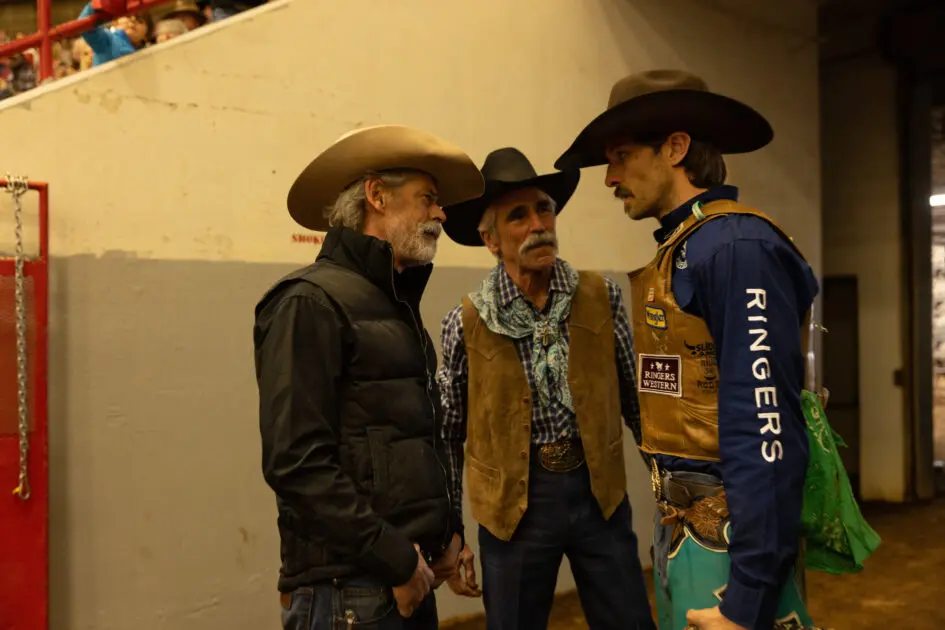As a father, certain movies resonate deeply, often pulling me into their stories as I imagine myself in the scenes — especially ones that deal with kids and cancer. I can’t help but think about what I would do if my little girl ever faced a challenge like that. I know I’d dedicate every waking moment to finding the best medical care, no matter the cost or distance. Selling all my worldly possessions wouldn’t even be a question, and I’d take on multiple jobs to cover the expenses. My sole focus would be her well-being, ensuring she feels supported and loved at every turn. Friends would rally, family would come together, and no stone would be left unturned in our quest to see her healthy and smiling again.
These types of films grab hold of me emotionally and do not go until the final credits.
Ride is a gripping tale of family strife directed by Jake Allyn, who also co-wrote the script with Josh Plasse. The film centers on John Hawkins (C. Thomas Howell), who learns that his daughter’s cancer is worsening. Desperate to get her into a better treatment center, he needs a substantial amount of money, quickly. John turns to his estranged son, Peter (Allyn), who has recently been released from prison, to find a way to secure the funds.
After a botched robbery attempt, both Peter and John find themselves entangled with the criminal underworld. Matters escalate when local police, including Sheriff Monica Hawkins (Annabeth Gish), John’s wife, get involved in the situation.
Ride isn’t my usual go-to for film reviews since I’m more of a horror/sci-fi enthusiast. But every so often, a movie synopsis grabs my attention and compels me to take a closer look. The premise of Ride, centered on a family coming together to save the life of a little girl, immediately resonated with me and activated my dad mode. Just the thought of that narrative touched something deep inside me.
However, the film’s story is slow to unfold. More than halfway through, I found myself waiting for the pace to pick up. While Ride dedicates ample time for character development to set the stage, it feels like an extended wait for something significant to happen. It’s not poorly written, but the plot progresses very slowly, to the point where I almost considered fast-forwarding to get to the more impactful moments.
C. Thomas Howell delivers a standout performance as the father of the ailing child in Ride. His character exudes a tough and grizzled exterior, clearly shaped by his life as a cowboy. This rugged facade contrasts sharply with his loving and gentle demeanor toward his daughter, showcasing Howell’s range as an actor. His portrayal of a father willing to do anything to save his child is nearly flawless. I found myself empathizing deeply with his character, imagining the lengths I would go in his situation. Few actors possess the skill to evoke such a powerful connection, but Howell is undoubtedly the shining star of Ride.
This is not to say the remaining cast of characters are lacking. Jake Allyn delivers a strong performance as Peter, a hardened character whose time in prison has exposed him to the criminal underworld. His decision to reconnect with his father and resort to crime to raise money feels plausible, though it ultimately puts everyone at risk when things go awry. While Allyn portrays Peter well, I found it difficult to relate to him at times, and some of his decisions left me puzzled.
Similarly, Annabeth Gish’s portrayal of Monica, a career law-enforcement officer, is commendable, but some of her actions in the film seemed out of character for someone in her profession. The writing for Monica felt lacking, though Gish did her best with the material. Overall, the cast’s performances were solid, but the character development and decision-making could have been stronger.
The cinematography and sound design in Ride are adequate but have their shortcomings. The rodeo scenes, a significant aspect of the film, suffer from awkward camera work that makes the action difficult to follow. Wider angles would likely have better captured the dynamic events compared to the tight close-ups used.
However, outside of these scenes, the film is shot beautifully, capturing the essence of its settings. The choice of music is generally fitting, but there are moments where the songs or sound effects detract from the experience. For instance, an Emergency Broadcast siren precedes a song, which distracts from a crucial moment in the film. While the song itself is appropriate, the siren pulls focus away from the scene’s emotional impact.

